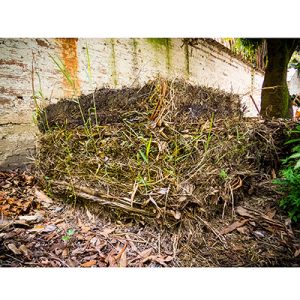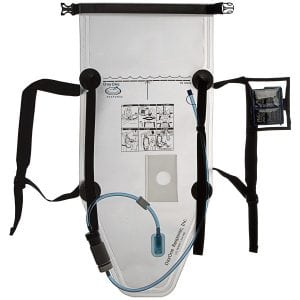
Agriculture
August 16, 2024
Silva Digester Bundle – Paca digestora Silva
Read SolutionImplemented by
Guillermo Silva Pérez

Updated on August 15, 2024
·Created on June 19, 2016
The Biofil Digester is a decentralized wastewater treatment system that uses anaerobic digestion.
The Biofil digester is a passive decentralized wastewater treatment system that uses aerobic decomposition and macro-organisms to break down waste. The typical digester accommodates 10 users and can be scaled to meet larger waste demands. The digester can also be modified to treat waste from existing septic tanks or treat sludge from other toilet systems. Efficiency of treatment and user capacity can be maximized by adding a “microflush” option which uses hand-washing greywater for flushing.
Target SDGs
SDG 6: Clean Water and Sanitation
Market Suggested Retail Price
$880.00
Target Users (Target Impact Group)
Household, Community
Distributors / Implementing Organizations
Biofilcom, Global Sustainable Aid Project
Competitive Landscape
Direct competitors include Biopipe.
Countries
Bangladesh, Ghana, India, Liberia, Nigeria, Senegal, Sierra Leone, South Africa
Manufacturing/Building Method
Designed in Africa for Africa, Biofil relies entirely on local manufacturers and local materials. Stand-alone digester and toilet models are available in flush and microflush units, which are precast and typically installed in two days.
Intellectural Property Type
Trademark
User Provision Model
Users can obtain a Biofil Digester from Biofilcom.
The Global Sustainable Aid Project (GASP) is a humanitarian aid organization that offers a version of the Biofil Digester, the Microflush. Users can obtain a Microflush-Biofil through GASP's MAKER-LENDER Microfranchise model, contact GASP for micro-franchising information.
Distributions to Date Status
5000, as of 2013.
Flow rate (L/min)
Unknown
Power Supply Type
No electrical power input required.
Technology type
Aerobic digestion, bio-filtration
BOD Removal Efficiency
84%
COD removal efficiency
86.1%
NH4-N Removal Efficiency
Unknown
TSS removal efficiency
82.4%
Total Phosphorus Removal Efficiency
23.3%
Fecal Coliform Removal Efficiency
95.6%
Design Specifications
The Biofil Digester is an on-site organic waste treatment system that combines the benefits of the flush toilet system and composting toilets while attempting to eliminate the disadvantages of those systems. The Biofil Digester technology treats all organic degradable matter through the natural process of aerobic decomposition. The basic digester is 2 ft x 2 ft x 6 ft (600 mm x 600 mm x 1800 mm). Each digester operates as a filter via rapid separation of solids and liquids, aerobic composting of solids, and biological -filtration of wastewater.
Technical Support
Contact the manufacturer for technical support.
Replacement Components
Unknown
Lifecycle
Designed for a lifespan of 20 years with an assumed maximum household size of 15 users per day.
Manufacturer Specified Performance Parameters
The Biofilm Digester was designed to process all organic degradable matter through aerobic decomposition while not emitting odorous gas. The digester is suitable for all soil conditions. and can be laid above ground or below ground depending on the groundwater level of the location. The biofilm digester requires minimum maintenance and needs no mechanical or electrical aeration of solid mass to achieve decomposition.
Vetted Performance Status
Effluent Quality Analysis was performed by CSIR Water Research Institute. Analysis results for the Biofil systems for the following parameters: pH, conductivity, BOD, COD, temperature, ortho-phosphate, nitrate as nitrogen, ammonium as nitrogen, and nitrite. Influent concentrations are unknown. The analysis results showed that levels for pH, Cond., BOD, and COD met EPA Guidelines. A Thesis assessing the filtration properties found that the filter had a limited impact on the reduction of TSS, TDS, COD, NO3, and PO4.
Safety
There are no known safety issues with this product.
Complementary Technical Systems
The Biofil Digester can be paired with a hand-washing station which uses the greywater from hand-washing to flush the toilet. This design reduces water use and promotes hand-washing by requiring greywater to flush the toilet.
The BiofilTM’s Rain Forest Treatment System (RFTS) is a centralized wastewater management system that includes the BiofilTM Digester. More broadly, RFTSs are a technical approach designed to treat organic wastewater from both domestic and industrial sources but can also be modified to handle flows from larger community buildings (i.e., hospitals, offices, recreational places, etc.). RFTS’s may include vertical gardens, sand filters, reed/planted beds, and/or gabions.
Academic Research and References
Amoah, P., et al., 2016, Performance evaluation of biofil toilet waste digester technologies in Ghana: the efficacy of effluent treatment options. Environmental Technology 37(23): 3002-3013.
Alemneh, L., 2015, Assessment of the Robustness of Biofil Toilet Technology for the Treatment of Blackwater. 5th International Dry Toilet Conference
Owusu-Antwi, P., et al., 2015, The Potential of Subsurface Infiltration for the Treatment of Biofil Toilet Technology Effluent. Management Studies 3(11-12): 281-299.
Knutson, J., 2014, Evaluation of innovative decentralized sanitation technologies in Ghana. Thesis: M. Eng., Massachusetts Institute of Technology, Department of Civil and Environmental Engineering.
Kuwornu, I., 2014, Assesing the Performance of the Filtering Unit of the Biofil Toilet System, Thesis: Master of Science in Water Supply and Environmental Sanitation, Department of Civil Engineering, College of Engineering.
Mecca, S. et al., 2013, Application of GSAP Microflush Toilets: a sustainable development approach to rural and per-urban sanitation. ECOSUD 2013, Vol. 175.
Compliance with regulations
Testing performed in Amoah et al (2016) showed pollutant concentrations in the Biofil effluent exceeded both Ghana EPA and WHO standards for discharge. An assessment of the filtration units suggests that none of the elements of the filtering unit was able to attenuate defined parameters to approved Ghana EPA guidelines.
Evaluation methods
The manufacturer cites reductions in coliform levels by 95.6% and pollutant concentrations in the Biofil effluent exceeding Ghana EPA and WHO standards as evaluation criteria.
Other Information

Agriculture
August 16, 2024
Implemented by
Guillermo Silva Pérez

Agriculture
December 19, 2024
Implemented by
Green Heat

Agriculture
December 27, 2023
Implemented by
Aquabox, UK

Agriculture
January 11, 2024
Implemented by
Kenya Ceramic Project (KCP)

Agriculture
January 19, 2024
Implemented by
Clean Team Ghana

Agriculture
January 8, 2024
Implemented by
DayOne Response

Agriculture
December 20, 2023
Implemented by
SOIL Haiti

Agriculture
February 2, 2024
Implemented by
Glanris

Agriculture
August 16, 2024
Implemented by
Sanitation First India

Agriculture
February 5, 2024
Implemented by
CalWave
Have thoughts on how we can improve?
Give Us Feedback
Please I need a video on how to construct the biofil toilet. My email is enochdsurveys@gmail.com